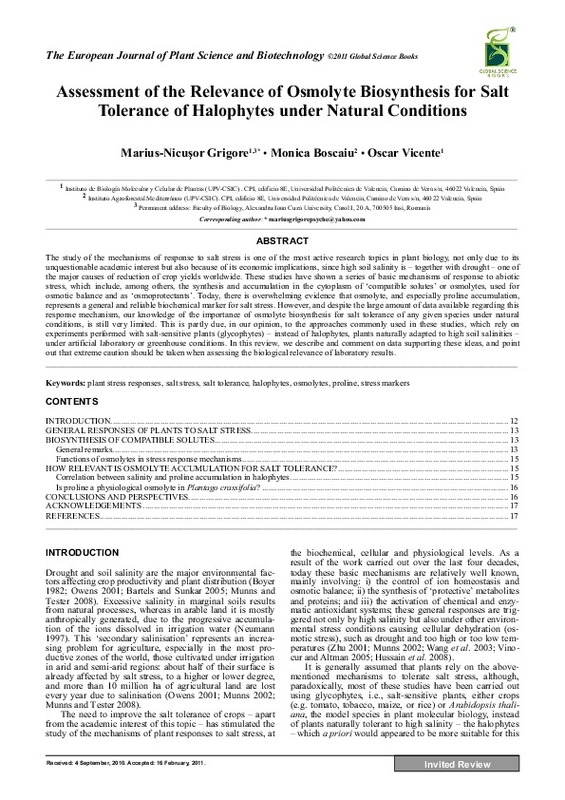JavaScript is disabled for your browser. Some features of this site may not work without it.
Buscar en RiuNet
Listar
Mi cuenta
Estadísticas
Ayuda RiuNet
Admin. UPV
Assessment of the relevance of osmolyte biosynthesis for salt tolerance of halophytes under natural conditions
Mostrar el registro completo del ítem
Grigore, M.; Boscaiu Neagu, MT.; Vicente Meana, Ó. (2011). Assessment of the relevance of osmolyte biosynthesis for salt tolerance of halophytes under natural conditions. European Journal of Plant Science and Biotechnology. (5):12-19. http://hdl.handle.net/10251/34256
Por favor, use este identificador para citar o enlazar este ítem: http://hdl.handle.net/10251/34256
Ficheros en el ítem
Metadatos del ítem
| Título: | Assessment of the relevance of osmolyte biosynthesis for salt tolerance of halophytes under natural conditions | |
| Autor: | Grigore, Marius-Nicusor | |
| Entidad UPV: |
|
|
| Fecha difusión: |
|
|
| Resumen: |
[EN] The study of the mechanisms of response to salt stress is one of the most active research topics in plant
biology, not only due to its unquestionable academic interest but also because of its economic implications, ...[+]
|
|
| Palabras clave: |
|
|
| Derechos de uso: | Reserva de todos los derechos | |
| Fuente: |
|
|
| Editorial: |
|
|
| Versión del editor: | http://www.globalsciencebooks.info/ | |
| Código del Proyecto: |
|
|
| Agradecimientos: |
Work in the UPV laboratories is being funded by the Spanish Ministry of Science and Innovation (project CGL2008-00438/BOS), with contribution from the European Regional Development Fund. M.N.G. acknowledges the support ...[+]
|
|
| Tipo: |
|







